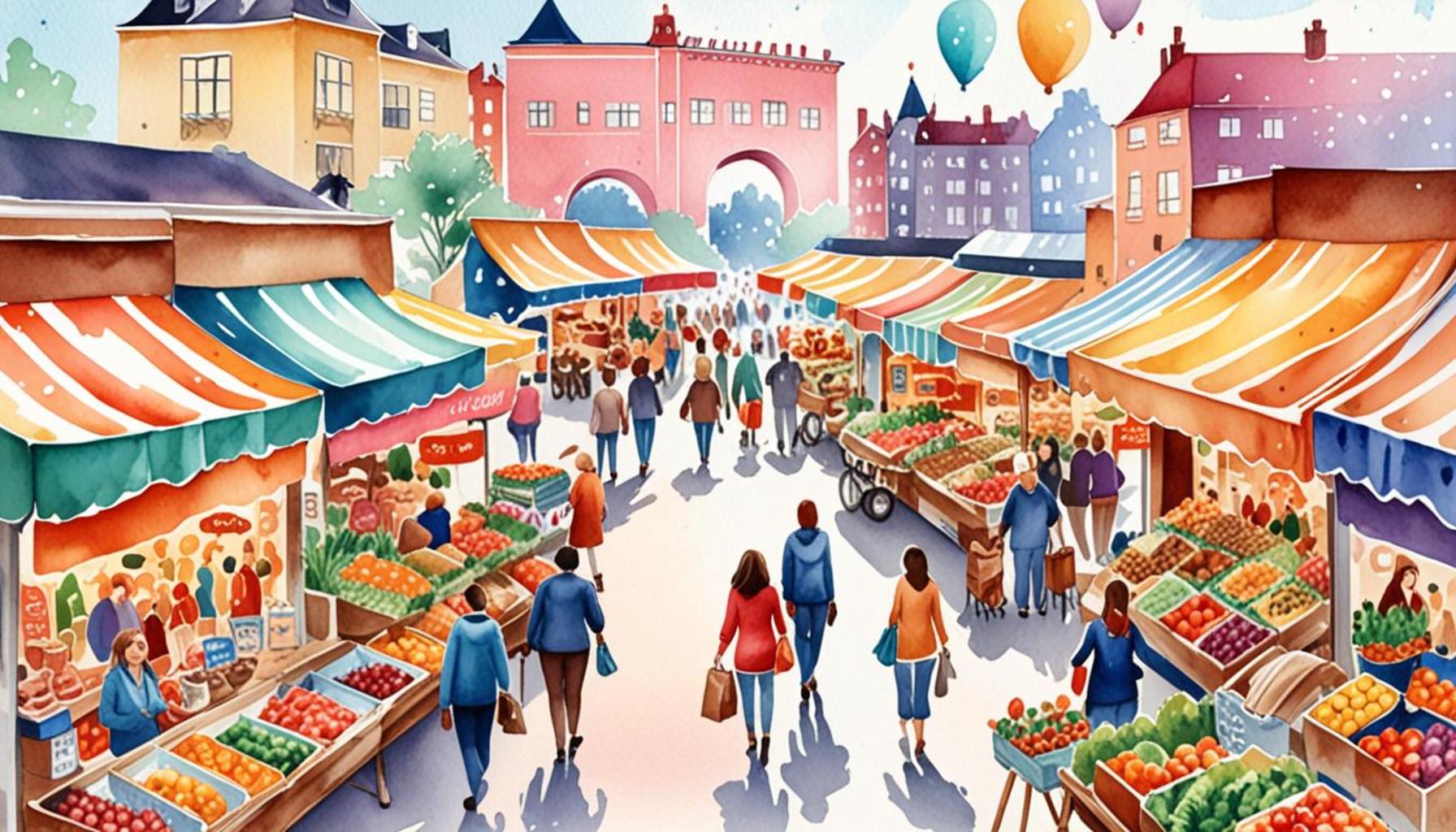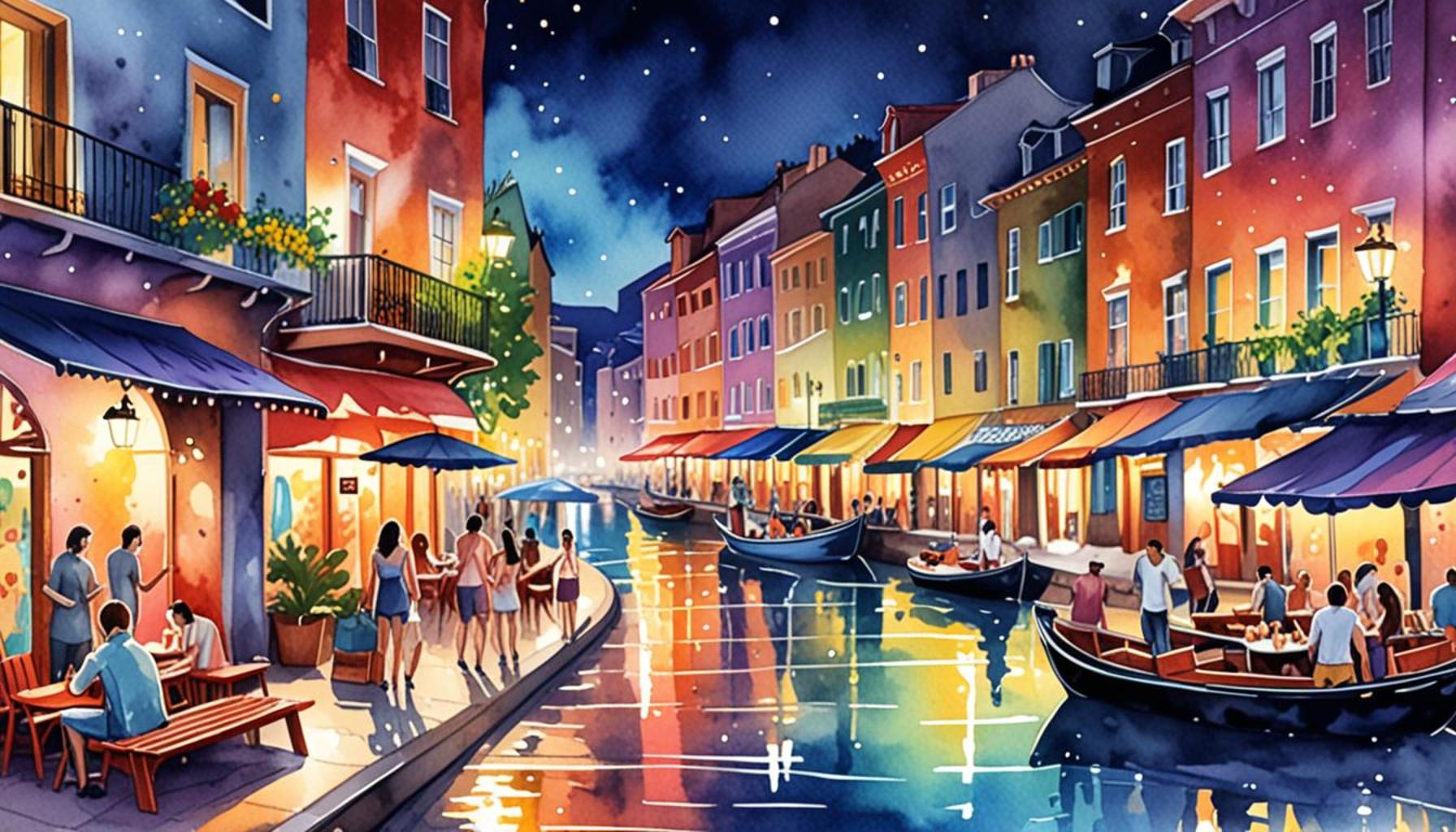Local Shopping Experiences: Markets and Fairs that Tell the Story of Each City

Exploring the Heartbeat of Local Communities
The vibrant atmosphere of local markets and fairs reveals a dynamic fusion of community spirit and cultural identity. By venturing into these colorful venues, you can discover much more than just goods; they serve as a tapestry of stories woven from the threads of local history, artistry, and culinary traditions.
Across the United States, the diversity of markets showcases the unique offerings of each region, inviting both residents and visitors to savor the local flavors. Take, for instance:
- Farmers’ Markets: From the sun-kissed orchards of California to the bustling farmlands of the Midwest, these markets are overflowing with organic produce, handmade jams, and farm-fresh honey. Connecting with the local farmers not only supports agriculture but also emphasizes sustainable practices in food sourcing.
- Craft Fairs: These events highlight local artisans who pour their heart and soul into their creations. Whether it’s handmade pottery from the hills of North Carolina or intricate textiles from New Mexico, craft fairs allow you to bring a piece of the local culture home with you.
- Street Fairs: Urban areas hold lively street fairs that celebrate diversity through food, music, and art. Imagine savoring spicy street tacos in Los Angeles, listening to jazz in New Orleans, or experiencing the arts in Brooklyn, where each fair becomes a cultural rendezvous.
These markets are not just about making purchases; they are avenues for connecting with local vendors who often depend on community support to thrive. Every stall has a story, each product rooted in the cultural narrative of the city.
- Local Vendors: Shopping at these markets connects you directly to the makers. This local economy helps cultivate strong community ties and sustains neighborhoods.
- Unique Offerings: Expect to find one-of-a-kind items like artisan cheeses, custom jewelry, or local artwork—pieces that reflect the creativity and uniqueness of their makers.
- Cultural Events: Throughout the calendar year, many markets host events that spotlight local history and celebrate diverse backgrounds, such as cultural parades, food festivals, and live performances.
Embracing the local market scene—even in the flea markets of New York City or the charming seasonal fairs of the Midwest—delivers enriching experiences. These venues are invaluable for anyone wishing to engage deeply with the community, making each visit not just a shopping trip, but an exploration of the heart and soul of American culture.
Join us in uncovering the fascinating ways that markets and fairs celebrate local character and ingenuity. Experience firsthand the unique flavors, crafts, and traditions that make each community distinctive and vibrant.

DON’T MISS OUT: Click here to discover the best apps for planning your trip
The Stories Behind Every Stall
In every local market and fair, the true essence of a city comes alive through the stories of the people behind the stalls. Each vendor is often a passionate individual who embodies the spirit of their craft, inviting shoppers not just to purchase goods but to engage in a shared narrative. This connection to local entrepreneurs enriches the shopping experience, allowing visitors to understand the heart of the community.
The significance of these markets extends beyond mere commerce; they become a canvas where cultural identity is vividly displayed. As one explores these bustling venues, they will encounter:
- Gastronomic Adventures: Local markets often provide a rich sensory experience, where the aroma of homemade pastries wafts through the air and flavors of ethnic dishes offer a glimpse into the culinary traditions of the region. Attending a market in San Francisco, for example, allows you to sample locally sourced sourdough bread alongside fresh Dungeness crab, a true testament to the city’s rich maritime heritage.
- Artisanal Techniques: The skills of local artisans are on full display, with demonstrations of everything from hand-blown glass to handcrafted leather goods. In cities like Philadelphia, you might witness a master cheesemaker at work, educating shoppers on the processes that yield their beloved sharp cheddar. These encounters foster appreciation for craftsmanship and support for small businesses.
- Community Gatherings: Markets and fairs often double as social events, drawing together locals and visitors alike. Live music, workshops, and cultural performances transform a simple shopping trip into a festive gathering. In Nashville, the vibrant atmosphere of the city’s famous farmers’ market features local bands playing bluegrass tunes, creating an engaging experience beyond shopping.
Furthermore, local markets are vital for sustainable practices, connecting consumers directly with producers. By choosing to shop at these venues, individuals contribute to the upkeep of the local economy, ensuring that neighborhood businesses thrive. This localized approach to shopping helps reduce the carbon footprint associated with long-distance transportation of goods.
The diversity found within these markets reflects the unique character of each city, acting as a live exhibition of regional pride and cultural interplay. From the colorful food stalls of the weekly Union Square Greenmarket in New York City to the creative artisan fairs of Portland, each marketplace tells a story that is deeply embedded in its environment.
As you embark on your journey through local markets and fairs, remember that every product has a backstory. Whether it’s a jar of preserves made from heirloom tomatoes or a hand-knit scarf, these products serve as tangible connections to the city’s history and the passion of its people.
| Category | Description |
|---|---|
| Cultural Heritage | Local markets showcase a city’s unique history and traditions. |
| Community Bonds | They serve as meeting points for locals, fostering connections. |
| Unique Offerings | Markets provide artisanal products, often unavailable elsewhere. |
| Food Experiences | Taste local delicacies that represent the city’s culinary scene. |
As you wander through bustling local markets and vibrant fairs, you’ll discover the essence of a city’s identity captured in its offerings. These marketplaces are more than just spaces for transactions; they are vibrant hubs that connect residents and visitors alike, showcasing local flavors, crafts, and traditions. The selling of handmade goods often tells a story, reflecting the craftsmanship passed down through generations.In a world dominated by large retail chains, shopping locally not only bolsters the economy but also creates a sense of belonging within the community. Engaging with local vendors offers insights into their passion and dedication, enriching the shopping experience. As you dive deeper into these markets, you will uncover the tales behind each product, from homemade jams to artisan cheeses, making each purchase a celebration of the city’s culture. Moreover, the communal atmosphere enhances the overall experience. Festivals held within these markets introduce a wide array of activities—from live music performances to cooking demonstrations—making it an immersive experience worth savoring. Join in, taste, and engage with the crowd; it’s an opportunity for memorable interactions with fellow shoppers, artisans, and city inhabitants. Every visit is not merely a transaction; it’s a journey through the city’s narrative woven through the local shopping experience.
DISCOVER MORE: Click here to dive into unique travel itineraries
Cultural Connections Through Craft and Community
Local markets and fairs vary significantly in offerings, but they all share a common thread: the celebration of community and culture. Every stall not only markets products but also serves as a portal into the local culture, bridging the past and the present. The vibrancy of these marketplaces reveals just how interconnected local shopping experiences can be with the cultural identity of a city.
One aspect that distinguishes these experiences is the variety of crafts and goods that reflect local traditions. For instance, in Chicago, the renowned Randolph Street Market showcases vintage finds alongside handmade goods, allowing shoppers to immerse themselves in the rich history of the area. Antique hunters can discover authentic American artifacts, while contemporary artists display unique pieces that reimagine traditional forms. This blend of old and new tells a compelling story of how urban life continues to evolve while still honoring its roots.
Moreover, these marketplaces often play host to seasonal celebrations, offering a rhythm to the shopping experience that aligns with the cultural calendar. In New Orleans, the French Market transforms during Mardi Gras, with vendors donning festive attire and selling intricate masks and bead necklaces that define the festivities. Such events present an opportunity for visitors to not only buy souvenirs but also engage with the local culture in a vibrant, immersive way.
Aside from celebrating heritage, local markets are pivotal in promoting inclusivity and diversity. Many cities have begun to prioritize diversity within their fair circuits, ensuring that a wide range of voices and experiences are represented. The Brooklyn Night Bazaar, for instance, brings together artists, food vendors, and musicians from underrepresented communities, all contributing to a diverse tapestry that reflects the dynamic character of urban life.
Moreover, natural food markets are growing in popularity, emphasizing organic and locally sourced products. The Capital City Farmers Market in Virginia not only offers fresh produce but also educates consumers about sustainable farming practices. Shoppers have the chance to meet the farmers behind their food, asking questions and learning about organic gardening methods. This personal connection fosters a greater appreciation for food systems and local agriculture, making each shopping trip an opportunity for learning.
Additionally, social initiatives often arise from these local markets, providing support for underserved populations. Numerous markets feature social enterprises that empower marginalized groups, such as women artisans or refugees. In Salt Lake City, the Downtown Farmers Market partners with non-profits to create spaces for local immigrant entrepreneurs, providing them with the tools to thrive while sharing their cultures through food and crafts.
Lastly, the digital transformation of local shopping cannot be overlooked. As e-commerce grows, many markets have embraced technology, launching online platforms to reach wider audiences. This shift ensures that local artisans can showcase their items beyond geographical limits, while shoppers around the nation can access unique goods that epitomize the local culture of distant cities.
Thus, local markets and fairs do not merely function as commercial hubs; they become vital storytelling venues where the unique narratives of communities are shared. Each visit offers insights into the history, creativity, and social dynamics of the area, elevating your shopping experience from a simple transaction to an enchanting exploration of local heritage.
DISCOVER MORE: Click here for itinerary ideas
Conclusion: The Heartbeat of Urban Life
Across the United States, local markets and fairs stand as vibrant testaments to the cultural narratives woven into the fabric of each city. They serve not merely as venues for shopping but as dynamic spaces where community spirit thrives, and local history is celebrated. Each excursion through these bustling marketplaces unveils the rich tapestry of traditions, diverse voices, and communal stories that define urban life.
The Randolph Street Market in Chicago, the French Market in New Orleans, and the Brooklyn Night Bazaar are just a few examples illustrating how local artisans and vendors provide insights into their unique heritages and contemporary expressions. By bringing together varied goods, artistic crafts, and innovative food offerings, they create an ecosystem where culture and commerce coexist beautifully.
Moreover, as cities prioritize social inclusivity and sustainability, these markets have become platforms for promoting diverse perspectives, empowering marginalized communities, and fostering connections to local agriculture. The growing trend of digital access to local markets further enhances these experiences, allowing shoppers nationwide to engage with authentic products that reflect the spirit and identity of faraway places.
Ultimately, the beauty of local shopping experiences lies in their ability to transform a simple purchase into a meaningful engagement with a city’s history and its people. Whether you are a resident or a visitor, taking the time to explore these markets and fairs will undoubtedly enrich your understanding of urban life and inspire a deeper appreciation for the colorful stories that arise from each community. Thus, the next time you seek a unique shopping experience, let the market be your guide, revealing the heart of the city with every transaction.


